The art of remembrance: tattoos from the front line
In honour of the 100th Armistice Day, we take a look at a powerful photography series by Charlie Clift, that explores the significance of tattoos in the British armed forces and captures the heartfelt stories of love and loss behind body art

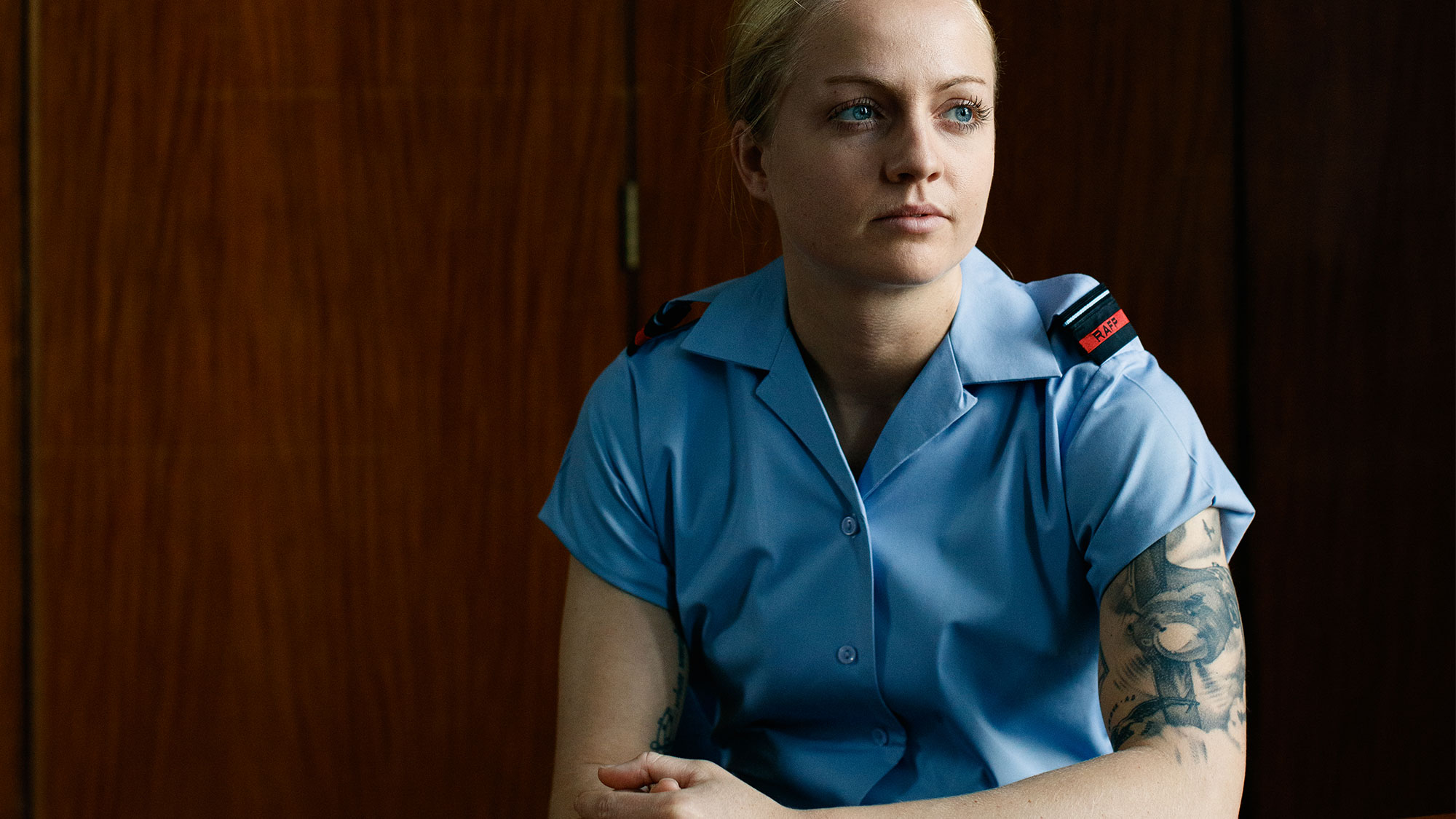
In honour of the 100th Armistice Day, we take a look at a powerful photography series by Charlie Clift, that explores the significance of tattoos in the British armed forces and captures the heartfelt stories of love and loss behind body art
Synonymous with self-expression, body art has become increasingly mainstream, offering a tangible way to illustrate significant events in our lives. Dolphin-encircled belly buttons – once the rage amongst teenagers up and down the country – may well have been a catalyst for the much-peddled phrase, ‘think before you ink’, but contemporary pieces are now more likely to represent an intimate portrait of identity than a misspent youth.
That’s certainly the case for decorated serving personnel and veterans of the British armed forces, who are reinterpreting what the act of remembrance means in a compelling new exhibition touring the UK called ‘Tribute Ink’. Produced by The Royal British Legion and the National Memorial Arboretum, the exhibit explores the emotive meaning behind tattoos, redefining them as indelible marks of respect for lost comrades, and celebratory insignias to commemorate friendships formed in the military.
‘The sacrifices made, big and small, are ones that come to define you. That’s why, for centuries, soldiers, sailors and airmen have been moved to tattoo themselves with permanent motifs commemorating service experience,’ says Alexander Owen, the head of Armed Forces Engagement at The Royal British Legion who spearheaded the project.
‘Tribute Ink aims to uncover some of the inspiring modern stories of remembrance living on the skin – and in the hearts – of our servicemen and women today. From the most elaborate full-body coverage, to delicate tributes for a fallen friend, the exhibition offers a glimpse into the comradeship, bravery and sacrifice experienced in our armed forces community.’
Drawing on her memories from 2011, Dani Cummings, a Leading Hand in the Royal Navy, is one of five women photographed for the series, and proudly displays an intricate swallow and anchor illustration on her back. ‘I designed this piece myself while serving in Afghanistan on my 21st birthday. It’s a lasting reminder of a key moment in my life,’ she says.
The exhibition has redefined what remembrance means to photographer Charlie Clift, who adds, ‘Tattoos have helped the people I met to cope with their feelings of loss, and I hope my series shows remembrance in a new and modern light.’
Celebrity news, beauty, fashion advice, and fascinating features, delivered straight to your inbox!
Now in honour of Armistice Day on 11th November, we have been asked to show remembrance through another modern medium, by putting down our phones and taking part a two minute silence at 11am. The 'Pause to Remember' campaign was created by the Royal British Legion to remind all generations that the Two Minute Silence to acknowledge our Armed Forces, past and present, is as relevant today as it was 100 years ago.
TASH KENNY, 25
‘My tattoo of a Spitfire symbolises the reasons why I joined the RAF,’ says Tash Kenny, a Flight Lieutenant at RAF Halton in Aylesbury. ‘Learning about the importance of air power during WWII sparked my passion for the military. I also had the Latin phrase, “per ardua ad astra” inked on my arm, which translates as “through adversity to the stars”. It’s the Royal Air Force’s official motto and relates to me on so many personal levels. Like other forms of art, tattoos have the ability to give you hope even when things aren’t turning out like you planned – and having a Spitfire and Chinook incorporated into a quarter sleeve represents the past and present for me. They’re iconic images that make me feel proud to serve my country.’
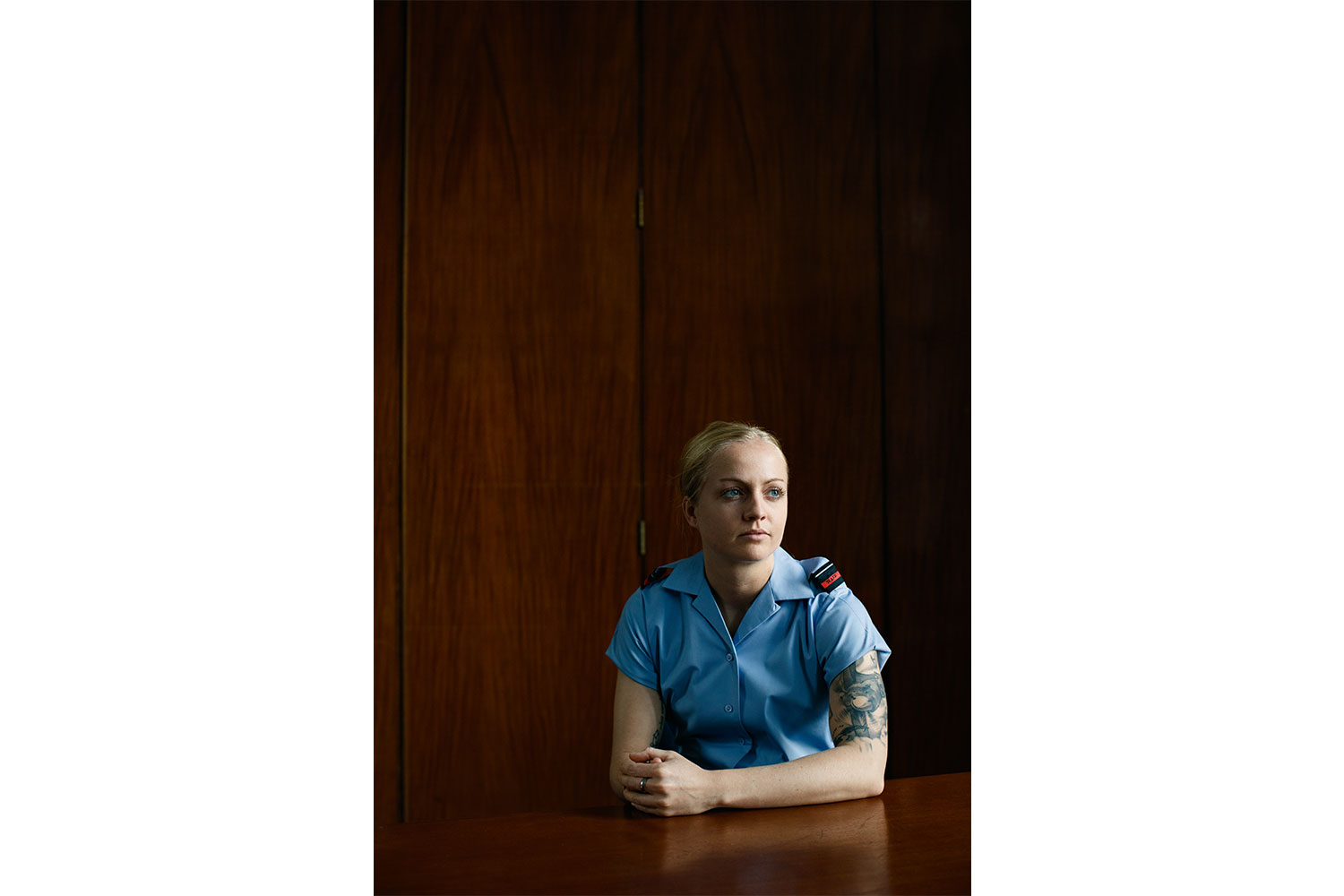
BETH DUNNING, 24
‘My dad was in the RAF when he was younger, but he left after a short stint and always regretted it. It was his influence and passion for the armed forces that inspired me to join up, and now I feel like I’m reaching my potential,’ says Beth Dunning, a Senior Aircraftman in the Royal Air Force. She recently had a penguin inked on her thigh to remember her tour of the Falklands last year. ‘I spent six months there and the tour made me realise just how much I love my job. The experience was life-changing, making me a better, stronger person. When I mention the Falklands, people always ask me about its penguins, so it felt like an unusual and fitting emblem to remember my time there.’

ABBY WINCHESTER, 39
Nicknamed ‘the machine’ by her friends in the Royal Air Force, Abby Winchester is a Survival Equipment Technician at RAF Cosford and renowned for her love of sports, especially rock climbing and cycling. The piece displayed on her right shoulder includes her RAF service number, which is unique to her. She says: ‘Body art can represent who you are as a person. Together with my tattooist, I created a design that symbolises my strength, determination and pride in serving. It’s a real talking point and has boosted my confidence.’
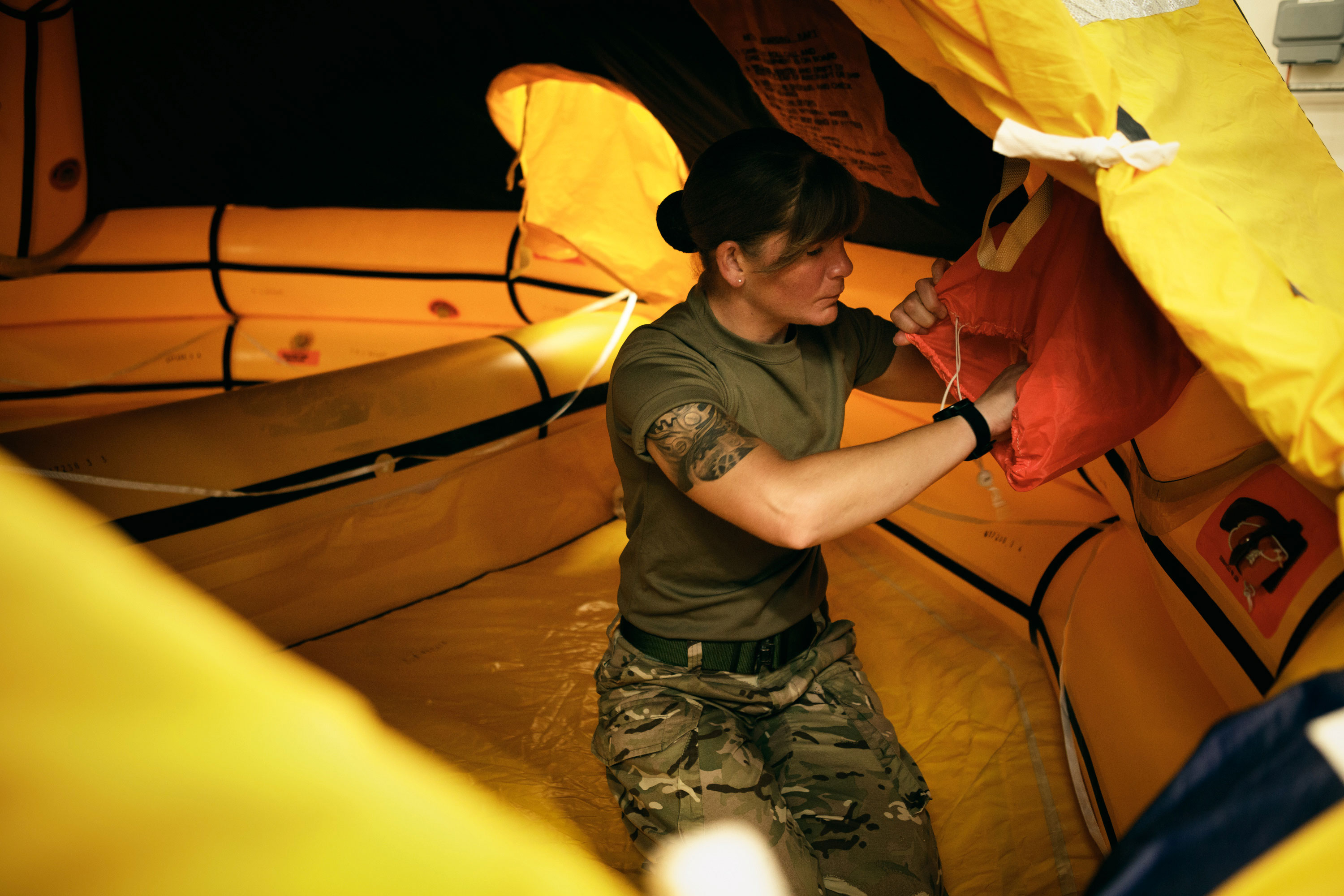
JOSH PICKMAN, 27
A Combat Medic in the Royal Army Medical Corps, Lance Corporal Josh Pickman follows a long line of military men in his family – both his great grandfathers fought in WWII. His sleeve honours their lives and Pickman’s commitment to 16 Medical Regiment in Colchester. ‘My most important tattoo is The Essex Regiment cap badge, because my family served in this regiment and it’s my local area. One of my great grandfathers was blown up in North Africa. He was the only man to survive the attack, but he had shrapnel in his body for the rest of his life. His party trick was sticking magnets to his arm.’
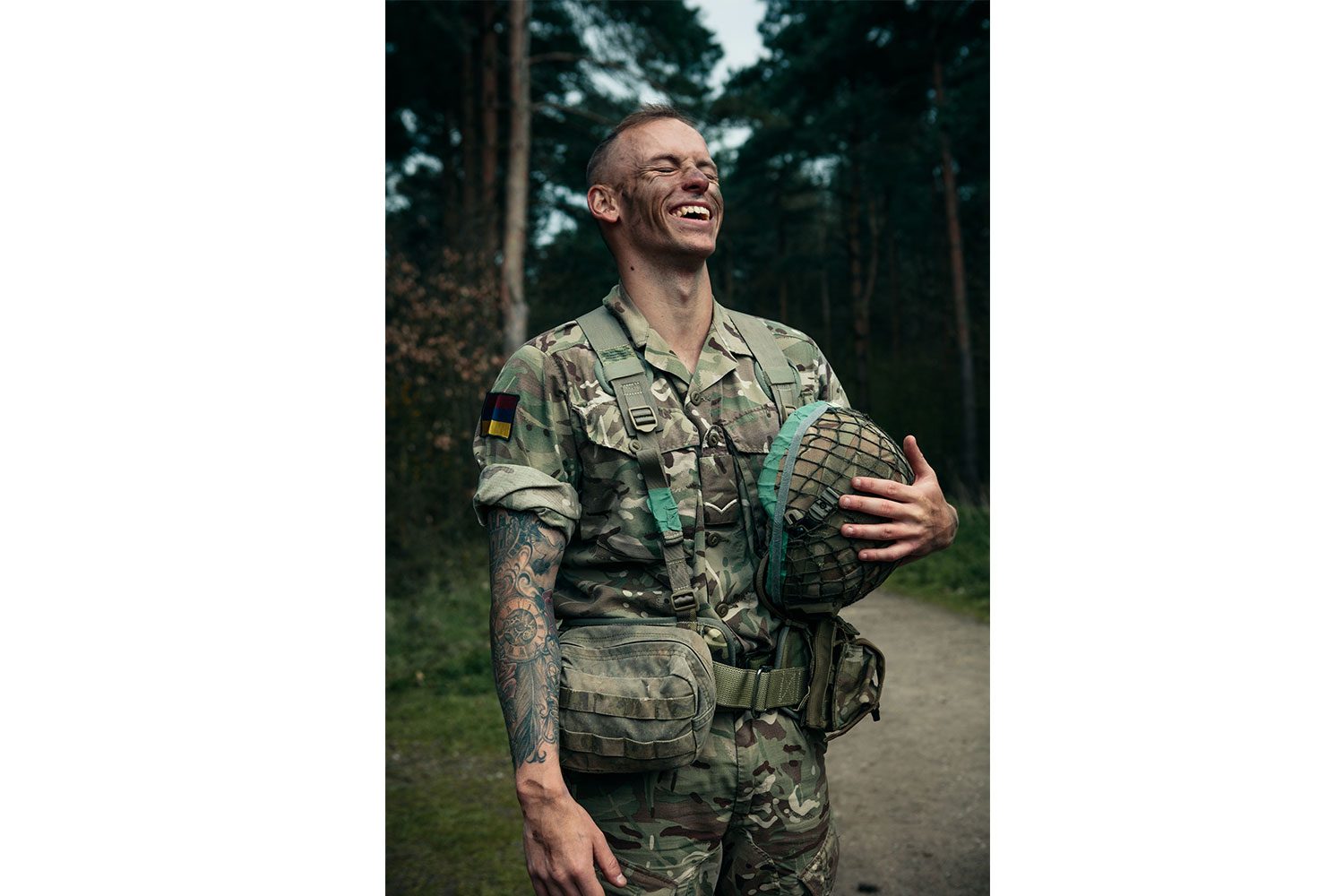
MICHAEL BELL, 29
‘I’m passionate about collecting tattoos, as decades of sailors have done before me,’ says Michael Bell, a Leading Diver for the Royal Navy. ‘I have the words “bomb frog” inked across my knuckles, which is a slang term for Navy divers and a popular piece of body art amongst sailors. The end goal for me is to achieve that “old-school sailor” look, with full-body coverage. That’s one of the reasons I was so excited to be involved in “Tribute Ink” – I think it’s important people are aware of the life-long sacrifice personnel in the armed forces make, and I believe that tattoos are a modern and relevant way to open up that conversation.’
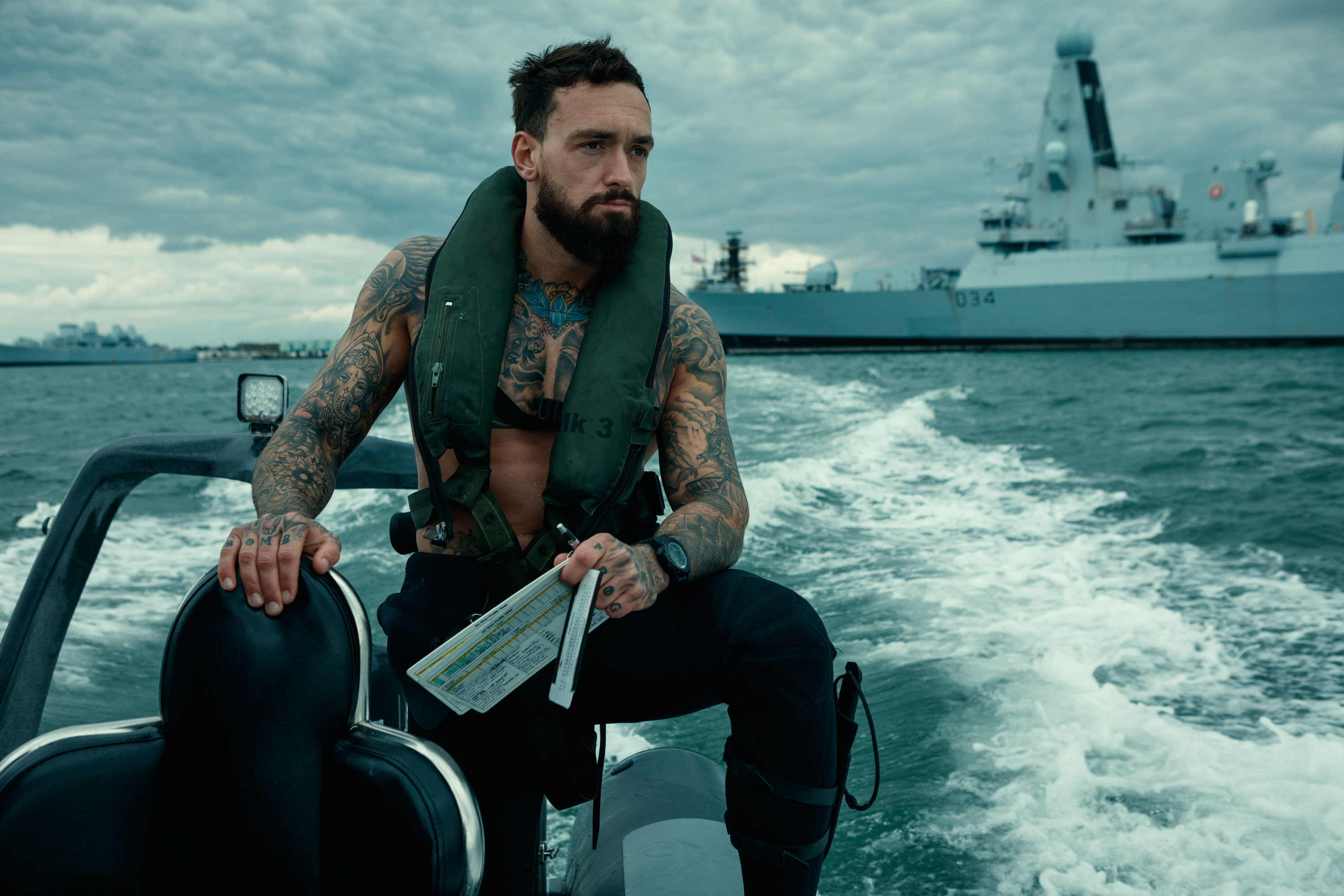
MICK TAYLOR, 49
Remembrance tattoos are often inspired by traditional military motifs. Flight Sergeant Mick Taylor, pictured below with Tash Kenny (pictured right) at RAF Honington, dedicates his body art to symbolic war insignia, sporting indelible poppies, clock hands pointing to 11 o’clock to mark Armistice Day, and the silhouette of a ‘Tommy’ soldier in WWI. ‘The motivation for my tattoos has always been remembrance,’ he says. ‘Some represent forgotten wars and conflicts, like our presence in Sudan; others are personal to me, such as a depiction of Operation Banner in Northern Ireland. Essentially though, my tattoos say thank you to all who have served and sacrificed for our country.’
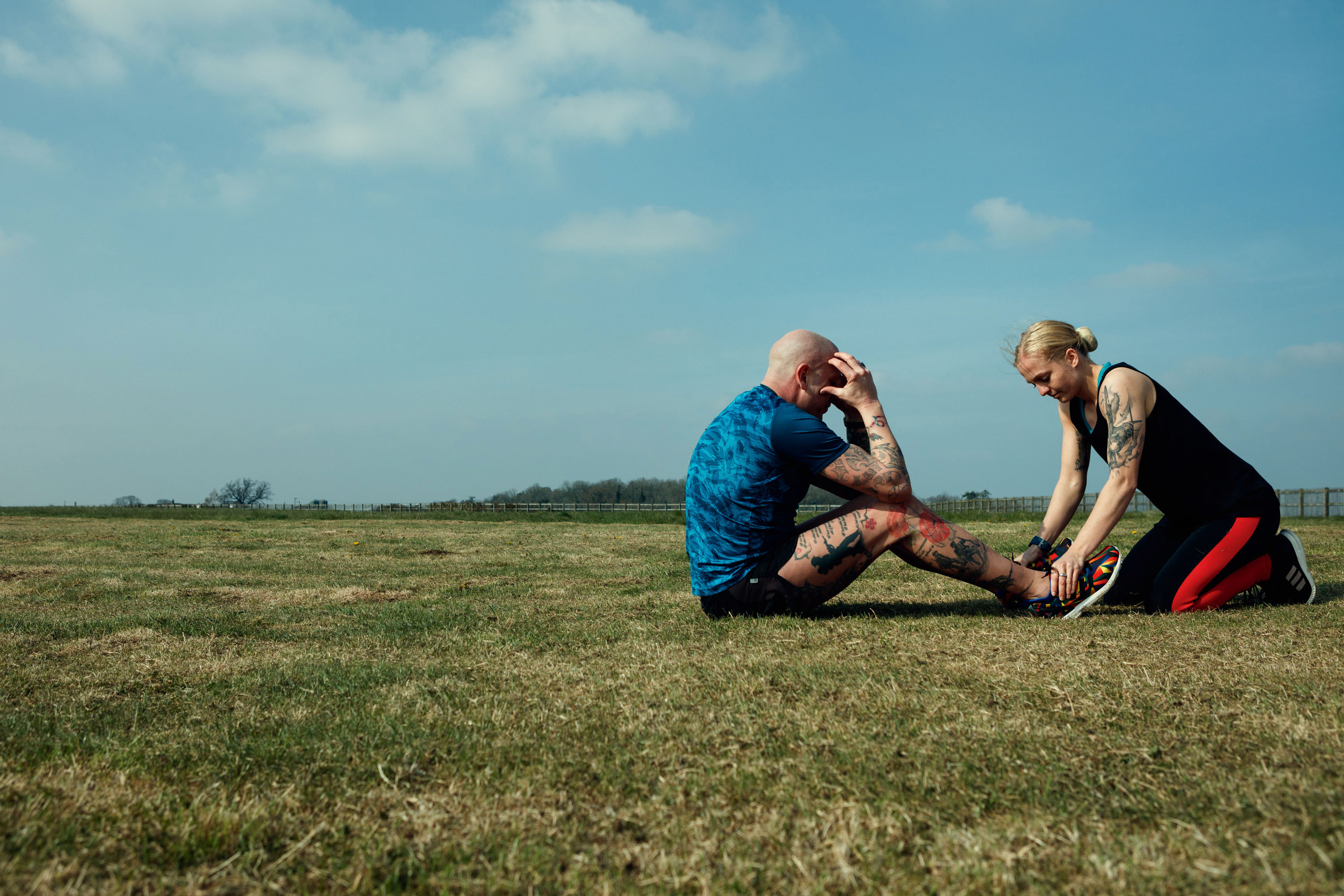
CHRIS WARNER, 36
‘I document my life through tattoos. They serve as a reminder of the difficult times I’ve faced, and pay tribute to the events and people most important to me, including my dad, who has now passed, and my daughter, Esmae,’ says Chris Warner – an Air Engineer Technician in the Royal Navy. ‘My tattoos improve my mindset, too. I might be having a bad day, but these pieces remind me that I’ve come through much worse.’
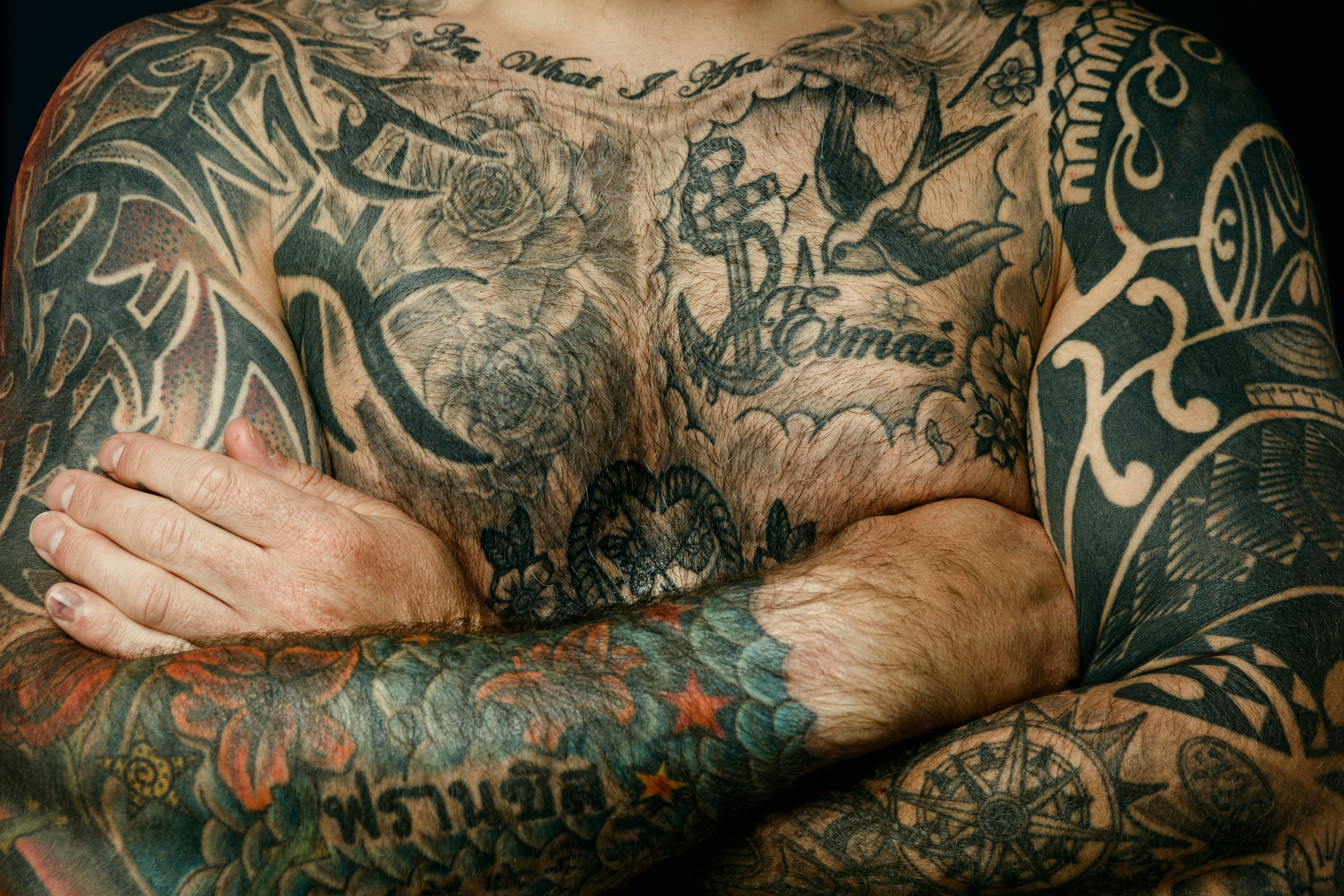
DANI CUMMINGS, 29
‘A big part of having a tattoo when you’re in the armed forces is talking about the meanings behind them,’ says Leading Hand, Dani Cummings, who joined the Royal Navy in 2007. Born in County Durham, Cummings has now served in Afghanistan, Bahrain and the Falklands, which is why having a tattoo to ‘anchor’ her to home felt right. ‘The anchor grounds me, while the swallow represents me being away from my family. I also have a heart tattooed on my leg to mark my camaraderie with friends and colleagues – I’ve put a lot of thought into each piece.’

Tribute Ink tours the UK from September, 2019. For dates and locations, visit rbl.org.uk/tributeink. The Royal British Legion is the nation’s biggest Armed Forces charity providing care and support to all members of the British Armed Forces past and present and their families. The Legion champions Remembrance and safeguards the Military Covenant between the nation and its Armed Forces. It is well known for the Poppy Appeal, and its emblem the red poppy

Nicola Moyne is a features and travel journalist who writes and edits for publications including The Telegraph, Sunday Times Style, Financial Times, HTSI, Wallpaper*, Grazia, House & Garden and Harper’s Bazaar. When she’s not working on an article, you’ll most likely find her horse riding or sailing the wide, meandering waters of Suffolk.